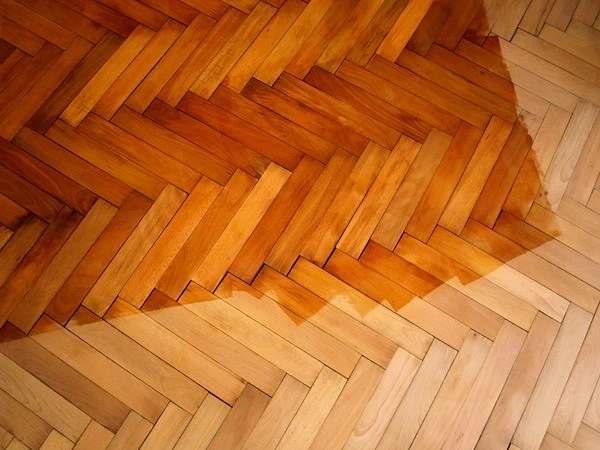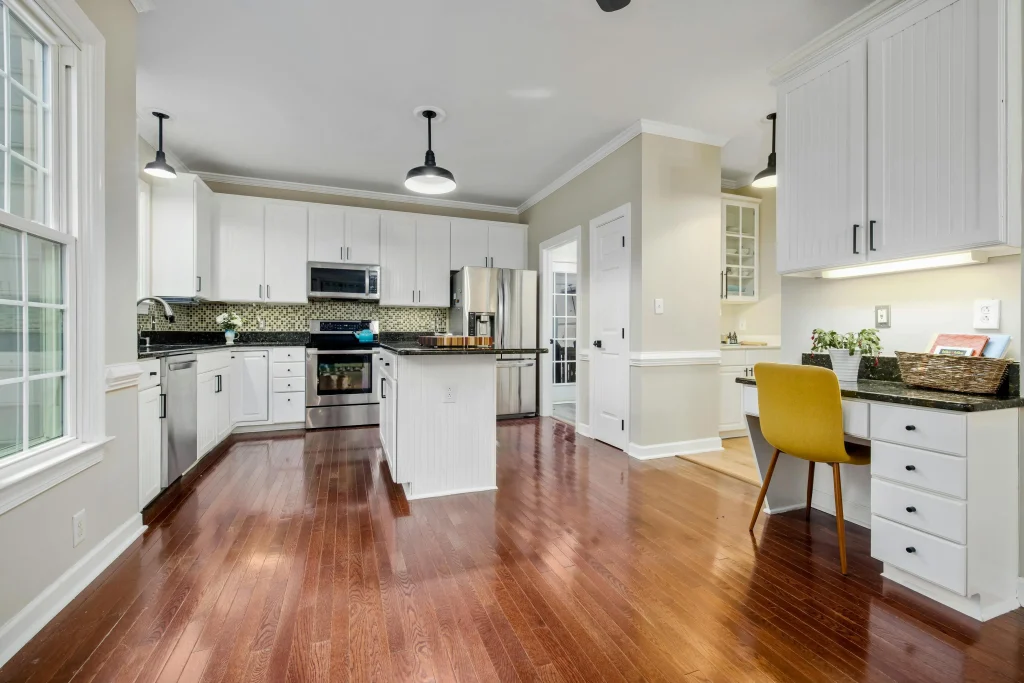What is Parquet Flooring? A Complete Guide for Homeowners
Parquet flooring has been making waves in the world of interior design.
You might have seen those stunning, intricate patterns on floors in chic apartments or stylish homes and wondered what they are. That’s parquet flooring for you.
This type of flooring not only adds a touch of elegance but also boasts a rich history and practical benefits.
If you’re considering giving your home a makeover, understanding what parquet flooring is could be your first step toward achieving that timeless, sophisticated look.
What is Parquet Flooring?

Parquet flooring is a type of wood flooring made up of small, geometrically arranged wooden blocks or strips.
The word “parquet” comes from the French term “parqueterie,” which refers to the decorative patterns these wooden pieces create. Originating in 16th-century France, parquet flooring was initially a luxury reserved for the nobility and adorned the halls of grand palaces like the Palace of Versailles.
Today, parquet flooring is accessible to a broader audience and comes in various styles and materials.
Its ability to add depth and character to a room makes it a popular choice among homeowners and interior designers alike.
The patterns can range from simple to elaborate, allowing you to customize the look to suit your taste and home decor.
Types of Parquet Flooring
When it comes to parquet flooring, you have several options to choose from:
- Solid Wood Parquet: Made from single pieces of hardwood, offering durability and a classic look. This type is ideal for those who want a traditional aesthetic with the option to refinish the floor over time.
- Engineered Wood Parquet: Consists of a top layer of hardwood veneer attached to multiple layers of plywood or high-density fiberboard. This construction makes it more stable and less prone to warping, making it suitable for areas with fluctuating humidity levels.
- Laminate Parquet: A budget-friendly alternative that mimics the look of real wood. It’s made from a photograph of wood applied to a high-density fiberboard and covered with a protective layer. While it doesn’t have the same longevity as solid or engineered wood, it’s easy to install and maintain.
- Parquet Tiles: Pre-assembled squares of parquet patterns, simplifying the installation process. These tiles can be made from solid wood, engineered wood, or laminate, providing flexibility in terms of cost and material choice.
Parquet Flooring Patterns
One of the standout features of parquet flooring is its variety of patterns:
- Herringbone Pattern: Perhaps the most recognizable, with its zigzag arrangement creating a sense of movement and elegance.
- Chevron Pattern: Similar to herringbone but with the ends of the planks cut at an angle, forming a continuous V shape.
- Basketweave Pattern: Reminiscent of woven baskets, this pattern adds a rustic charm to any space.
- Brick Pattern: Laid out like traditional brickwork, this pattern offers a straightforward yet stylish look.
- Custom Patterns: For those looking to make a unique statement, custom patterns can be designed to suit personal tastes and specific room designs.
Advantages of Parquet Flooring
Parquet flooring offers numerous benefits that make it a compelling choice for many homeowners:
- Aesthetic Appeal: The intricate patterns and natural wood grains add a touch of sophistication and warmth to any room.
- Durability and Longevity: With proper care, parquet flooring can last for decades, making it a long-term investment.
- Versatility in Design: Available in various wood types, colors, and patterns, parquet flooring can complement any decor style, from traditional to contemporary.
- Easy Maintenance and Cleaning: Parquet floors are relatively easy to clean with regular sweeping and occasional mopping, making them a practical choice for busy households.
Disadvantages of Parquet Flooring
Despite its many benefits, there are some drawbacks to consider:
- Cost Considerations: High-quality parquet flooring can be expensive, both in terms of materials and installation.
- Susceptibility to Moisture: Wood flooring, including parquet, can be prone to moisture damage, making it less suitable for areas like bathrooms or basements.
- Installation Challenges: The intricate patterns require precise installation, which can be time-consuming and may require professional help to achieve the best results.
Parquet Flooring in Different Rooms

Parquet flooring can be a beautiful addition to various rooms in your home:
- Living Room: Adds a touch of elegance and can be a focal point of the room’s design.
- Bedroom: Creates a warm and inviting atmosphere, perfect for relaxation.
- Kitchen: Choose moisture-resistant options and ensure proper sealing to prevent damage.
- Bathroom: Generally not recommended due to moisture concerns, but engineered wood options can be considered.
- Office Spaces: Provides a professional and polished look, enhancing the overall aesthetic of the workspace.
Cost of Parquet Flooring
Several factors can affect the cost of parquet flooring however the cost of parquet flooring installed piece-by-piece can range from $20 to $45 per square foot.
- Material Type: Solid wood is typically more expensive than engineered or laminate options.
- Pattern Complexity: Intricate patterns may increase installation costs.
- Room Size: Larger rooms will naturally require more materials and labor.
- Additional Costs: Consider the cost of subfloor preparation, adhesives, and finishing.
Conclusion
Parquet flooring is a timeless choice that offers both beauty and functionality. Its intricate patterns and variety of options make it suitable for any home, adding a touch of elegance and warmth.
While it may require a higher initial investment and careful installation, the long-term benefits and aesthetic appeal make it a worthwhile consideration for any home improvement project.
FAQs
Related Articles:
- What is LVP Flooring? Benefits, Types, and Installation Tips
- Can You Paint Laminate Flooring? Yes, Here’s How!

